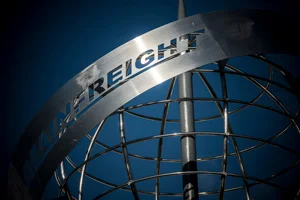A Guide to Proper Packaging
Freight comes in different shapes and sizes each with their own packaging requirements. Your top priority is to get your freight delivered to your customer in the same condition as it left you. Proper packaging is the single most important factor in achieving this.
Why Package Your Freight?
As we all know, travelling by road, rail, air or sea is not a perfectly smooth ride - all the little bumps and vibrations will jostle your freight around with the potential to cause damage. But with correct packaging, damage to your freight can be minimised.
The real cost of damages is much higher than you may first think:
- Replacement goods
- Freight costs
- Time lost arrange replacements
- Time spent dealing with an unhappy customer
- Disposal of damaged freight
Even more important than damage to your goods is protection against injury. Your team, our team and your customers can all be at risk from hazards ranging from jagged surfaces to the collapse of unstable loads.
Types of Packaging
From a simple cardboard box to large wooden crates, packaging comes in many different forms to suit your needs.
- Cartons – makes your freight easier to handle by keeping loose items together. They also provide protection to the display packaging of your product and allows the use of other packaging aids such as foam packing
- Pallets - whether you are moving boxes or a heavy piece of machinery the simple pallet is one of the most commonly used type of packaging. Packing your freight on a pallet provides stability making it easier to handle. Ensure that the pallet is in good condition; that the weight of your goods is evenly distributed; the goods don’t hang over the pallet edges; and the top surface is flat if possible
- Crates – can be made to fit any type of freight. Solid walls and strong weight-bearing structures making loading easier and provides full protection. We recommend that you use a professional crating company, unless you have experience in properly making a crate yourself
- Shrink Wrapping – for protection of the outer surface and stability for palletised freight. Prevents rubbing on cartons, reduces the risk of items being separated from the rest of the order and provides a surface for labelling to be affixed
- Banding/Strapping – either made of steel or plastic is used to stop freight from slipping off the pallet or to bind bundles together
- Labelling – make sure your goods communicate everything we need to know about your freight. Delivery address and any handling instructions, e.g. Fragile, top stow only, this way up, etc.
Things to consider
There are many things that you need to take into consideration when packaging your freight.- Depot Environment – Freight depots will have trucks, fork hoists and even rail units running through their site. Shrink wrapping your freight it will protect from diesel dust and fumes put out by these vehicles
- Road Environment – Pot holes, windy roads and crazy drivers are obstacles that our truck drivers will face. Pack your goods with stability in mind to ensure a safe journey
- Display packaging – moving cartons that will be on display in your retail stores? Shrink wrap and outer boxes will provide protection to keep your goods looking brand new
- Labelling – affixing freight labels to your goods will ensure that your goods are handled correctly and delivered to the correct place. Ensure that the labels are easily visible. With fragile freight packed into cartons a good idea is to label the box with a picture of the freight. Do not affix labels directly to the surface of your goods, as this could cause damage when the labels are removed
- Square – freight cost is determined by the volume of your freight as if it were square, i.e. measured to the longest point for all dimensions, so pack well to avoid having parts sticking out and you’ll reduce the chance of damage without costing extra
Don't make these common packaging mistakes
- Recycled packaging - cartons and polystyrene packing, once used do not have the strength they did when new and will do a poor job of protecting your goods. Even crates and pallets can become damaged, so inspect these before use
- Single risk packaging - wrapping goods will protect against dust and scuffs, but will do nothing to protect against vibration, crush or impact types of damage
- No space - the space between your outer packaging and your goods is your greatest protection against most damage types. Leave adequate space filled with compressible packaging e.g. airbags, foam, etc.
Improve your packaging
Take some time to look at your current packaging. Can you make any changes to what you are currently doing? Talk to your freight forwarder and see if they can suggest any other improvements. Correctly packaging your freight will prevent damage, save you money and prevent injury. Our number one objective is to ‘deliver our customers freight on time, every time, complete and damage free’.
Where to from here?
-
Want to learn more?
Go to our collection of articles to learn more about freight
Freight Basics Articles -
Can't find what you are looking for?
Contact your local Account Manager or nearest branch
Branch Directory
